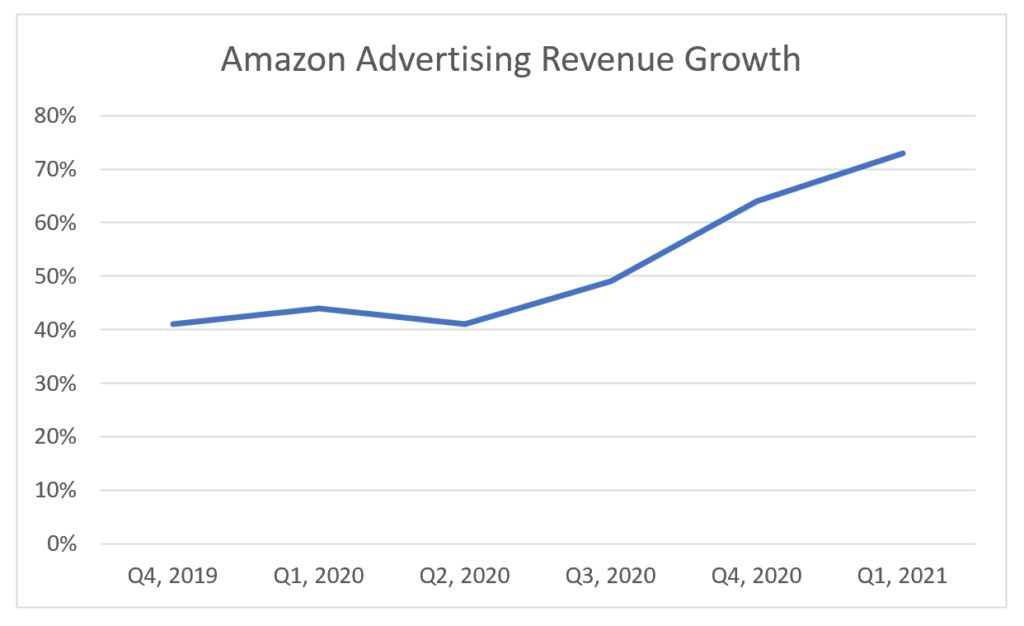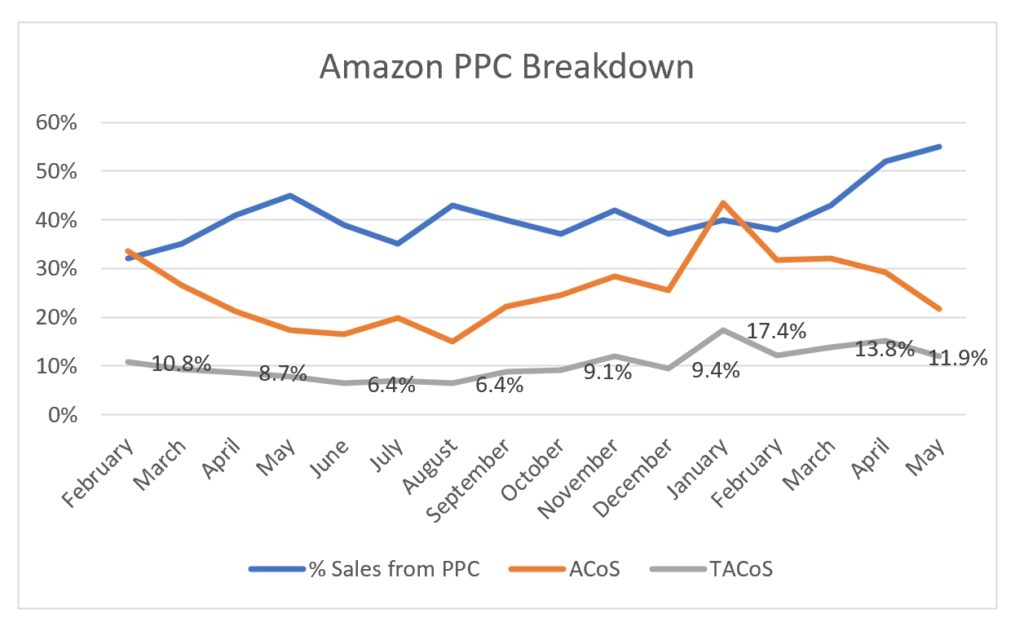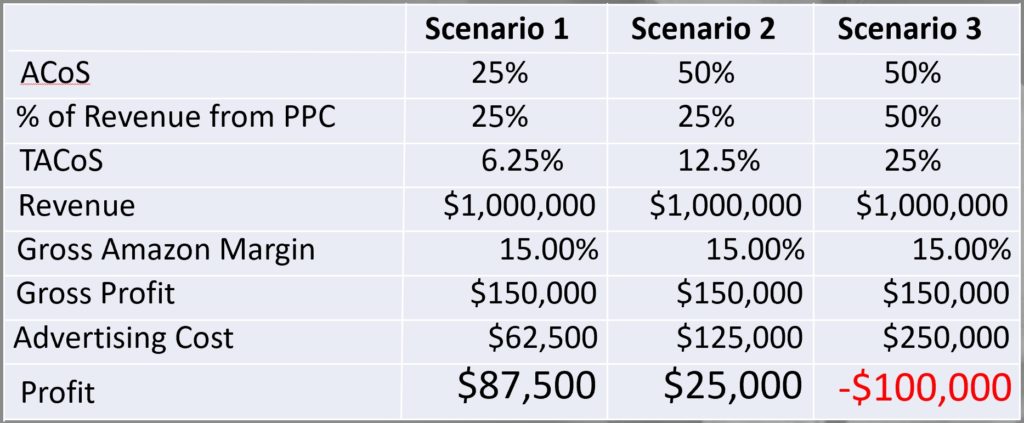This Is the Biggest Threat to Your Amazon Business
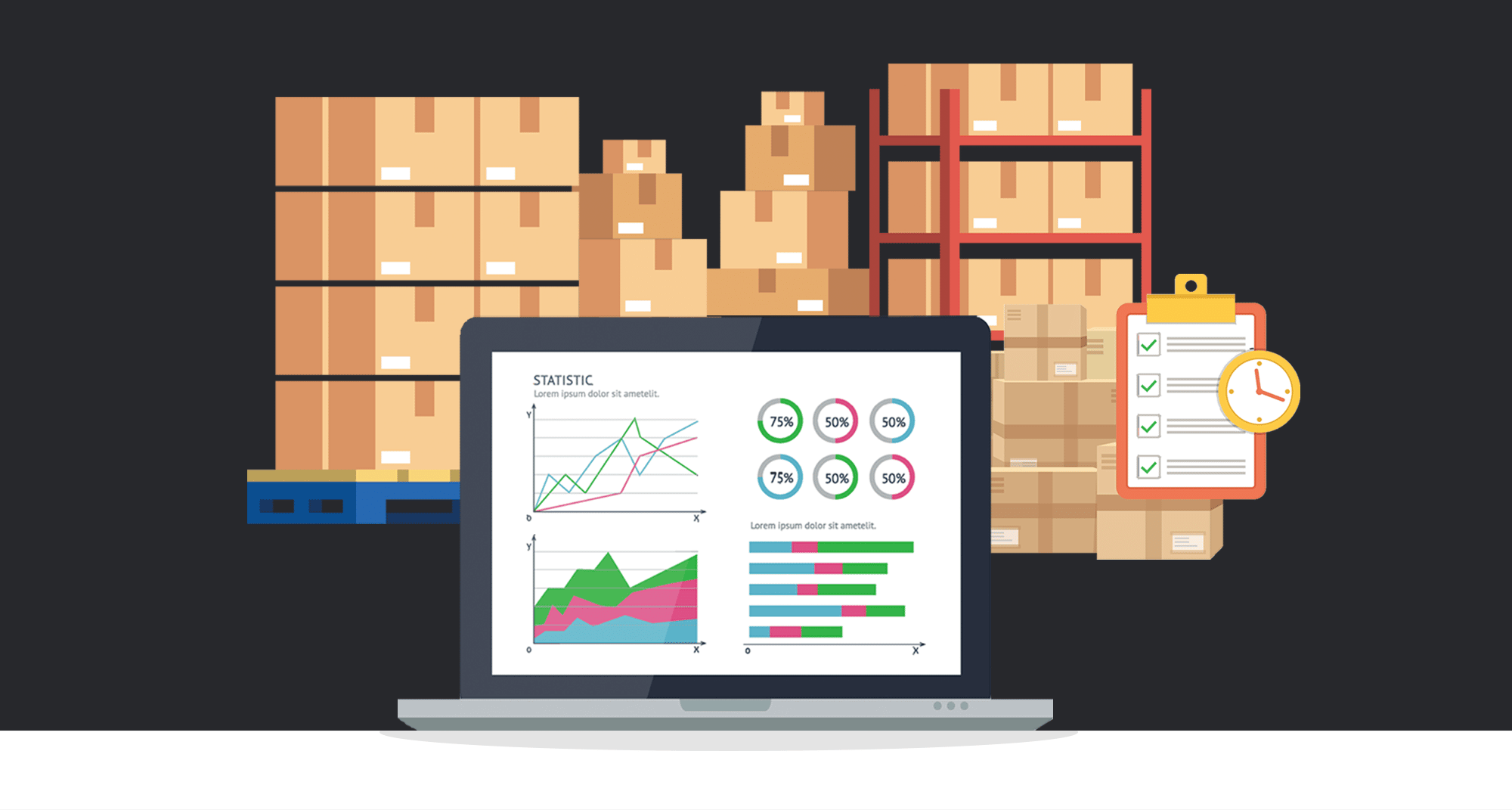
Life is hard right now for an Amazon business owner. Sea freight costs are crazy, the Trump tariffs are still in place, and over 60% of third-party sellers are from China. However, none of these things are the biggest threat to your Amazon business.
The single biggest threat to your Amazon business and your livelihood is rising Amazon advertising costs.
Amazon's Revenue from Advertising Is the Fastest Growth Unit at Amazon
To see how much Amazon PPC costs have risen as of late (especially during the pandemic) all one needs to do is look at Amazon's Q1 filings from this year.

Advertising is Amazon's fastest-growing segment by far. Despite amazing ecommerce sales growth of 44% thanks to the pandemic, this pales in comparison to the 77% growth in advertising sales year-over-year (the Other category “Primarily includes sales of advertising services” as per Amazon).
More scary is how rapidly accelerating this sales growth is occurring. Q2 results for 2021 are set to be released later this month – and likely, this upward trend is only going to continue.
And followers of Amazon's stock LOVE this growth. After Amazon smashed its Q1 expectations thanks to advertising, the stock surged over 6% in after-hours trading. And CNBC described Amazon's advertising growth “Astonishing”. For Amazon sellers though, Amazon's advertising growth is better described as “Devastating”.
PPC Costs Are Up 50% in 2021 and Still Rising
Amazon's rise in advertising revenue is a result of two things: increased competition and therefore increased bid costs, and a greater number of ad placements within Amazon.
Amazon has seemingly been rolling out a new ad placement at least once or twice a year. The two major rollouts have been in 2019 when Amazon made video ads available to most sellers (it had been offered to a small number of sellers beginning in 2017) and last year when it made Sponsored Display available to all sellers (after being introduced as a Beta in late 2019).
Consider now the search results page when searching for “yoga ball.” Of 63 results, 15 are Sponsored products.
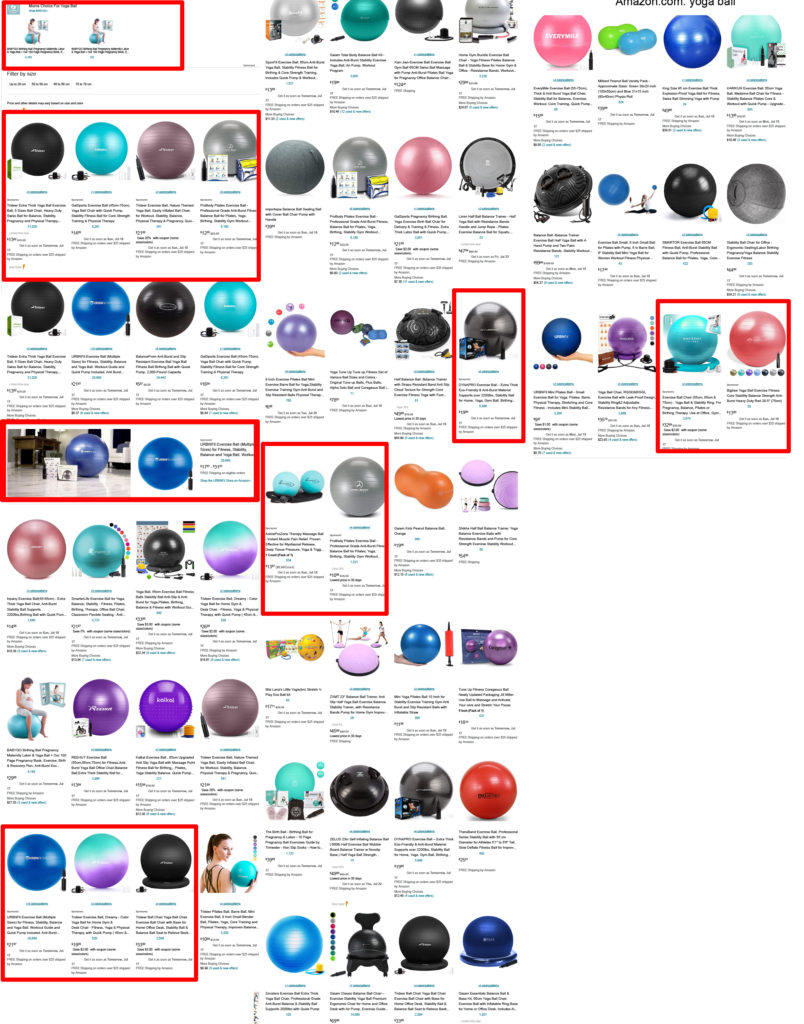
At the same time, the average cost per click has been skyrocketing as well with CPC costs up to $1.20 on average per click, up 50% year over year according to MarketPlace Pulse. At the same time, also from Marketplace Pulse:
The average advertising cost of sale (ACoS) was 22% in 2020. ACoS is the total ad spend divided by the total ad sales. It started 2021 at 25% and has now risen to over 30%. Yet, the average conversion rate – the percentage of clicks an ad converts into sales – has remained relatively stable at 12%-13%. Thus the average cost of sale was $6-$7 in 2020 but has risen to $9-$10 – it takes eight clicks at an average price of $1.20 to generate one sale, up from $0.85.
I've seen these trends impacted my own brands as I chronicled in my recent annual update, where I've seen my brands' average ACoS rise from being low 20% to low 30% year-over-year.
However, rising ACoS and less organic search results is the ultimate double whammy for the oft-tracked Total ACoS or TACoS which measures ACoS as a percentage of overall sales. My own brands' TACoS rose from 8.7% in April 2020 to 13.8% in April 2021. My brands' rate of increasing PPC costs may be higher or above average, but let's be clear: anyone who has seen their PPC costs go down over the last year is the exception and not the norm.
Have Amazon Ad Prices Plateaued?
Eventually, Amazon will hit a point where sellers will not bid any higher on keywords. Has Amazon hit that point yet?
The answer, right this second, is an emphatic no, as shown by the year-over-year rise in PPC costs above. Will they soon hit this maximum tipping point? That's an open debate. Facebook ad costs experienced a significant dip during COVID and then recovered.
Unfortunately, a significant settling of ad costs could be precipitated by a major downturn in the economy or ecommerce, which would be a win-lose situation. In conclusion, don't hold your breath waiting for Amazon ad costs to decrease.
Rising PPC Costs Are Your Biggest Threat
Rising PPC costs are the biggest existential threat to your Amazon business and by knowing your Total ACoS you can easily figure out the impact on your bottom line. That's why it's so powerful. For every one percent increase in TACoS your overall profit margin will go down by one percent.
Consider a typical $1million Amazon business with a 15% gross Amazon margin (a term I've made up to represent your profit after all costs except advertising). A 6.25% TACoS means your overall profit margin is 15% minus 6.25%, or 8.75%. This means you have an overall profit of $87.500. However, if TACoS doubles to 12.5% then profit drops 6.25% to 2.5% and if TACoS goes up to 25% then…that seller is looking for a 9 to 5 job. This is worth repeating: your profit margin decreases by an equal amount that TACoS increases.
Every brand that we have sold has had a net margin of 10% to 15%. Most ecommerce business profit margins are going to be in the 5% to 20% range. If you are on the upper range of this scale, you may be able to withstand a 1% to 5% increase in TACoS (although not for very long). If you're on the bottom end of this scale, you will not withstand this increase in TACoS.
My ecommerce company in 2020 had an overall margin of roughly 14%. My TACoS from April 2020 went from 8.7% to 13.8% in April 2021 meaning I lost nearly a third of the profit I'd normally put in my pocket. Ouch.
The “My Revenue Is Rising” Trap
Ecommerce growth has been about 20% per year over the last several years (ignoring the exceptional growth during COVID). That means if you're just an average ecommerce company, your growth rate has been around 20%. Of course, you're an EcomCrew reader, so your growth rate is probably more like 30% to 50% (and even higher if you're an EcomCrew Premium member!)
Unfortunately, rising revenue is not the panacea for everything (that award goes to raising prices and raising profit margins). There's an old joke that an Amazon seller goes to a bank looking for a loan and when asked about his business plan, he says “we're going to sell everything at a loss and make up for it on volume.” If you're losing money on every sale and you sell more units, you're amplifying your losses.
Your business probably isn't selling items at a loss, but there comes a point when the rate of increase of advertising outweighs your increased profits from increasing volume.
What Can You Do?
Now that I've sounded the alarms, what can you do?
The most important thing you need to do is figure out what your TACoS is for the last three months and how that compares to the same period last year. How much has your TACoS increased? You need to track this religiously. Sellers get into problems not because there's no corrective action they can take against a ship slowly taking on water fifty feet from shore, it's that they're not even aware it's taking on water, and they sink before they can make it back to the dock to get the hole repaired.
In fact, you need to know more than just whether or not you're taking on water – you need to know how much exactly. If your TACoS has gone up 1% from 7% to 8% this year to last, then maybe you can just absorb that cost due to the significant revenue growth you're experiencing. If it has gone from 5% to 15% though, you need to take more corrective action. Here are some things you can do:
- Raise prices
- Eliminate unprofitable ad campaigns (normally the obvious choices are any campaigns that are not your highly refined manual Sponsored Products campaigns)
- Increase your conversion rate. Increased conversion rates can make unprofitable campaigns profitable. The obvious choices are giving your photography and videography a refresh
- Decrease your revenue share from PPC. Easier said than done, but increases your conversion rate will have the double whammy of making unprofitable PPC campaigns profitable and also increasing your organic rankings.
- Decrease costs. Unfortunately, we're in a period of extremely high sea freight prices and increased materials costs, so this one is better described as ‘manage your increased freight and product costs'.
Conclusion
COVID brought upon massive growth of ecommerce revenue for most sellers, but also a surge in PPC costs.
Freight costs and tariffs have brought a near-overnight surge of costs that we sellers have been forced to respond to. The danger with rising PPC costs, on the other hand, is that it is a gradual increase of costs without a press release or news headline to warn us. It creeps up on us, akin to the crab in the slowly boiling pot of water.
Exceptionally high sea freight costs are seemingly here to stay until the end of the year and there has been minimal progress on the ongoing China/USA trade war. With both of these things largely out of our control, there's no better time to look at controlling the one cost you do have some control over, advertising.
